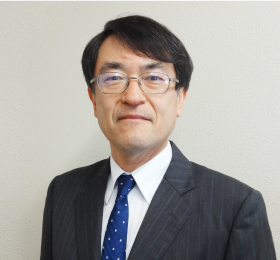Message from the Director
Center for Metabolic Regulation of Healthy Aging,
Kumamoto University Faculty of Life Sciences
Kazuya Yamagata, Director

Japan is home to 36,210,000 men and women over the age of 65, making up 28.9% of the population. We are now a “super-aged” society, and the question of how to extend the healthy life expectancy—that is, the years a person can expect to live in good health without restriction on daily activities —has become a policy issue. Furthermore, while average life expectancy in Kumamoto Prefecture is among the longest in Japan, healthy life expectancy is low. In order for the prefecture’s residents to enjoy a healthy old age, it will be necessary to close the gap between average and healthy life expectancy.
Kumamoto University’s Faculty of Life Sciences is working to advance research on aging and healthy aging, with an emphasis on three areas of particular concern: the metabolic and circulatory systems, cancer, and the nervous system. On May 1, 2018, the Faculty opened a new Center for Metabolic Regulation of Healthy Aging. The Center comprises seven divisions—(1) Metabolic and Circulatory Research; (2) Cancer and Stem Cell Research; (3) Nervous System, Sensory, and Locomotive Research; (4) Animal Models of Aging Research; (5) Epidemiological Research: (6) Research Support Division for Data Science/Omics: and (7) Research Support Division for Healthy Longevity—and collaborates closely with the International Research Center for Medical Sciences (IRCMS), the Institute of Molecular Embryology and Genetics (IMEG), the Institute of Resource Development and Analysis (IRDA), and Kumamoto University Hospital to advance research on aging and health aging, and to train internationally competitive human resources in these fields.

Recent research has begun to reveal that metabolic changes are one key characteristic of aging. Kumamoto University has a long and rich history of research on metabolism, and this continues to be a core area of study today. It is my hope that by focusing on the relationship between aging and metabolism, this Center will contribute to the development of new treatments for aging-related diseases such as diabetes, heart failure, locomotive syndrome, and dementia. An additional feature of this Center is our longevity research using the naked mole rat, a species with both an extremely long lifespan and a high level of resistance to aging and cancer (this work is being carried out by the Animal Models of Aging Research Division). Analysis of this unique animal model is expected to clarify the molecular basis of resistance to aging.
As Japan becomes an ever more aged society, our aims are to serve as a driving force for research that will enable the residents of this prefecture and the nation as a whole to enjoy a healthy old age, and to share the results of our work with the public. We look forward to your continued support and feedback in this endeavor.
Mission Statement
Elucidate the mechanisms that control aging
Deepen understanding of healthy life expectancy by investigating the metabolic changes caused by aging and the molecular mechanisms of stem cell exhaustion.
Elucidate the causes of aging-related diseases and develop new treatments
Elucidate the causes and pathology of aging-related diseases such as diabetes, heart failure, cancer, dementia, osteoporosis, and hearing loss, and develop new treatments and preventive measures for these diseases.
Train human resources in the field of aging research
Create an international network and train human resources capable of engaging in research on a globally competitive level.
Contribute to society
Share information on aging and healthy aging with the public and help residents of the “super-aged” society in Kumamoto and Japan maintain their health.

Organization & Laboratory


Access
●Route, Flights, Flight Time
Haneda,Tokyo — Kumamoto/ANA,JAL,SNA[100min.]
Osaka — Kumamoto/ANA,JAL[65min.]
Links
©2018 Faculty of Life Sciences Kumamoto University.